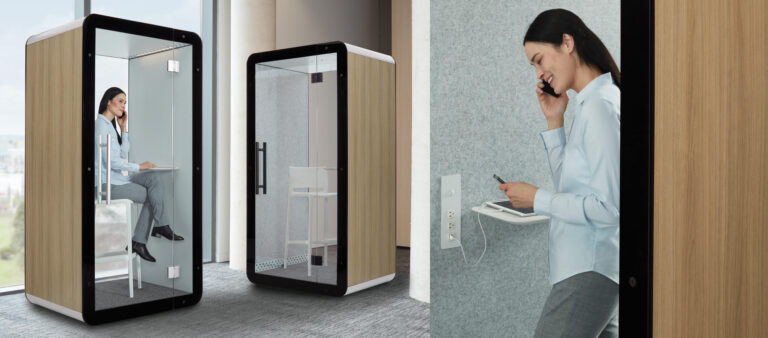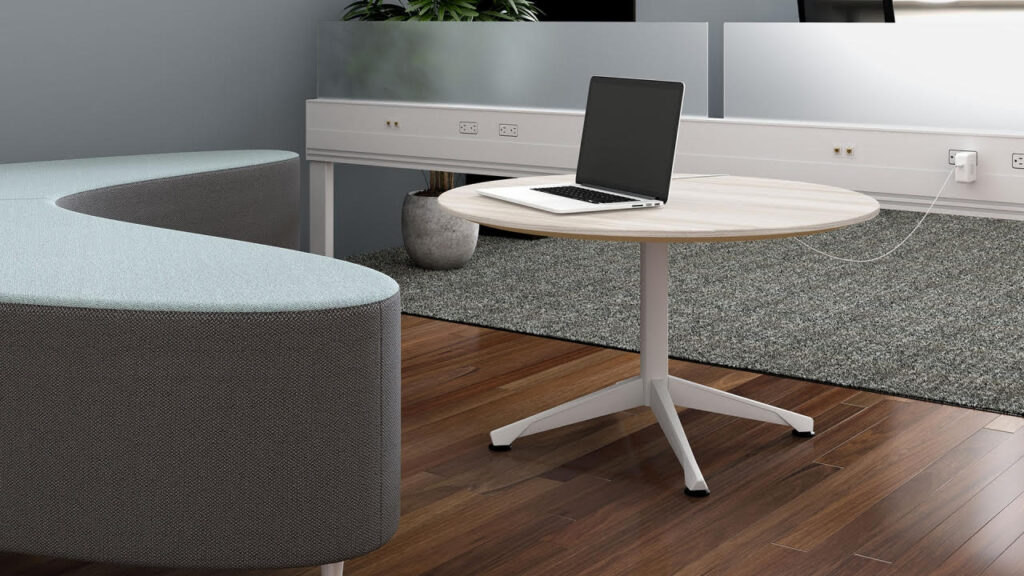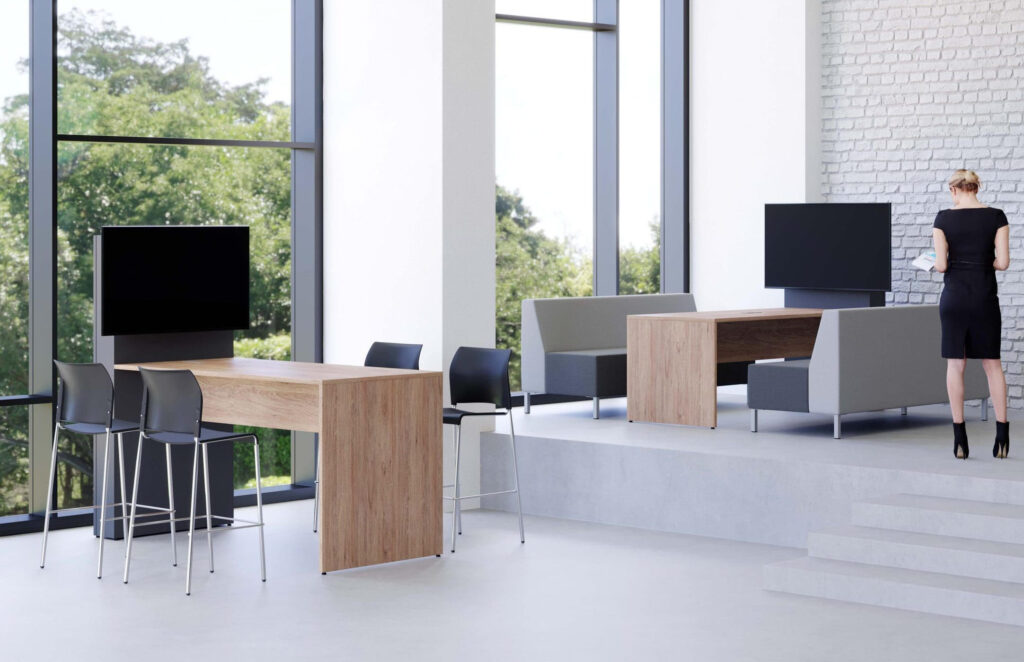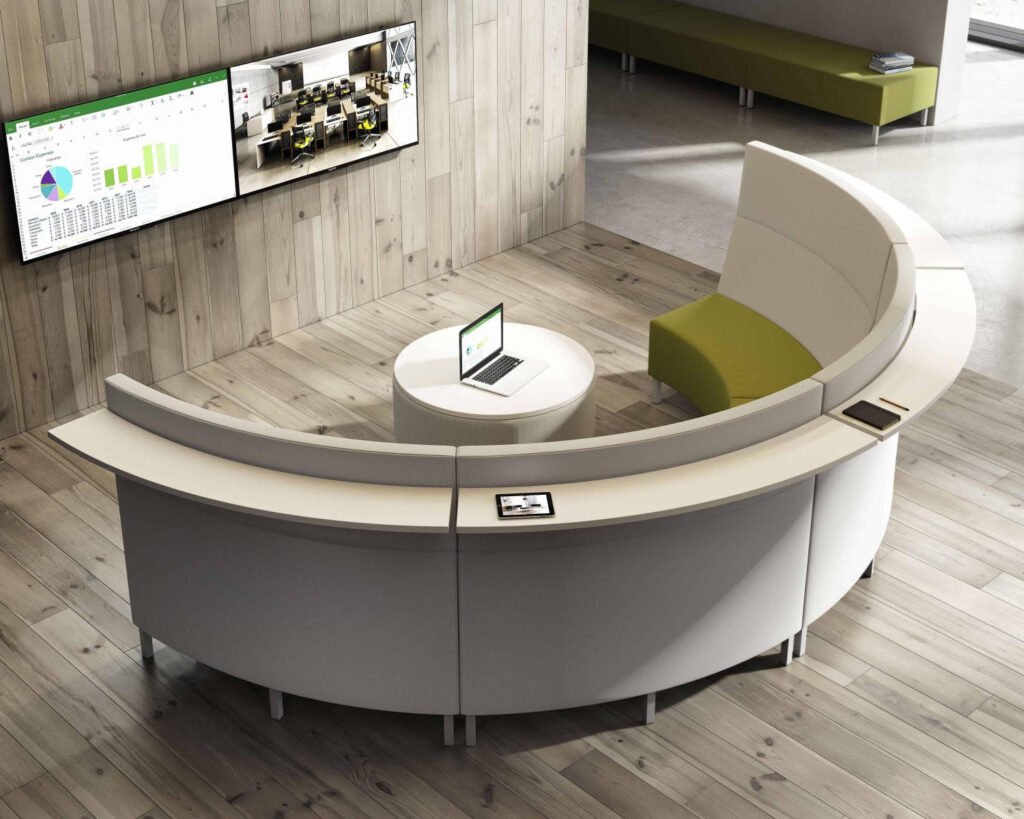Designing Flexible Workspaces for Hybrid Teams in New York
The rise of hybrid work has transformed how companies think about office design, particularly in cities like New York, where space is at a premium and adaptability is essential. As businesses embrace a mix of in-office and remote work, the need for flexible workspaces that accommodate fluctuating employee presence, support productivity, and reflect a company’s culture has never been greater.
In this blog, we explore how to design dynamic, efficient, and employee-focused work environments tailored for hybrid teams in New York. This includes guidance on sourcing office furniture that New York businesses can rely on for style, comfort, and sustainability.
Understanding the Need for Flexible Workspaces in NYC
New York City’s diverse business ecosystem—from tech startups in Brooklyn to law firms on Madison Avenue—requires workspace solutions that cater to varied operational models. A flexible workspace supports this diversity by enabling easy layout reconfiguration, incorporating multifunctional hybrid office furniture, and integrating technology for seamless collaboration. The hallmark of a flexible office is its ability to respond to changing team sizes and needs without major renovations or investments.
Key Features of Adaptable Office Design
At the core of hybrid workspace design is adaptability. Flexible desking systems, such as hot desks and hoteling stations, allow employees to reserve workspaces as needed. Mobile partitions and rolling whiteboards can quickly transform open areas into meeting rooms or quiet zones.
Acoustic pods and modular lounges offer both focus and informal collaboration zones. These elements empower teams to choose environments that match their tasks—an essential principle of activity-based working.

The Role of Technology in Hybrid Workspaces
Technology integration is also key to hybrid office functionality. With team members split between home and office, spaces must support video conferencing, real-time collaboration tools, and high-speed connectivity. Smart booking systems for desks and meeting rooms, wireless charging stations, and integrated AV setups help ensure smooth operations.
In NYC, where infrastructure varies by building, investing in tech-forward solutions can mitigate physical limitations and maximize the potential of workspace furniture.

Rethinking Storage for the Hybrid Office
Another major shift in hybrid workspace design is the evolution of storage strategies. As more businesses adopt cloud-based systems and digital workflows, the need for physical storage is diminishing. Paper filing systems are being replaced with digital document management, freeing up valuable square footage that can be used for collaborative areas or wellness zones.
Personal lockers have become increasingly popular to support employees’ flexible schedules and mobility within the office. These allow individuals to securely store their belongings regardless of where they work during the day. The reduction of on-site IT infrastructure, thanks to cloud computing and remote access platforms, also opens up additional space that can be repurposed to serve hybrid work needs more effectively.

Prioritizing Ergonomics and Employee Well-Being
Ergonomics and employee well-being should remain central to any hybrid workspace design. Comfortable seating, adjustable desks, and proper lighting reduce physical strain and increase focus. Incorporating biophilic design, such as plant walls or natural textures, can help reduce stress and bring a sense of calm to urban environments.
Air purification systems and improved ventilation are now considered standard best practices, especially in light of increased health awareness post-pandemic. All of these components are essential when evaluating hybrid office furniture options.
Choosing the Right Office Furniture for New York Workspaces
New York’s real estate market demands strategic use of every square foot. Office furniture that New York businesses select must be space-efficient, stackable, or dual-purpose (like storage benches or convertible tables). Leasing options or office furniture rental can provide flexibility for businesses anticipating growth or restructuring. Designers often repurpose existing elements to avoid waste and reduce cost, supporting sustainability and efficiency goals in flexible workspaces.

Amenities That Enhance Hybrid Work Environments
An emerging trend among commercial developers in New York is the inclusion of high-end amenities within office buildings to appeal to hybrid teams and evolving employee expectations. Amenities like in-building coffee and food kiosks, rooftop bars, fitness centers, spas, and wellness lounges are becoming more common.
Some properties now offer community rooms, shared conference facilities, meditation spaces, and game rooms to promote social interaction, collaboration, and employee satisfaction. These lifestyle-focused additions complement the flexible workspace concept by turning the office into a more attractive destination, rather than a mere obligation.

How Amenities Influence Employee Experience
For hybrid teams, these amenities can be the deciding factor in choosing whether to work from the office or remotely. The ability to work out, grab a coffee, or attend a community event without leaving the building creates a richer employee experience. When thoughtfully integrated with workspace furniture and office furniture designs, such amenities can elevate a company’s workplace strategy, strengthen company culture, and boost overall productivity.
Designing for Aesthetics and Brand Identity
Aesthetics remain important, especially in New York, where a visually impressive office can influence client perception and employee pride. Sleek finishes, local artwork, and workspace furniture tailored to brand identity give the space a professional yet personal touch. Incorporating brand colors or mission-inspired design motifs can reinforce company culture.
When browsing for solutions like “modern office furniture near me,” local providers such as D2 Office Furniture & Design, Inc. offer tailored options for hybrid offices that blend style, flexibility, and comfort with eco-conscious values.

Sustainability in Hybrid Office Furniture
The importance of sustainability in hybrid office design cannot be overstated. Businesses in New York are increasingly turning to sustainable hybrid office furniture made from recycled, repurposed, or ethically sourced materials. Examples include desks crafted from reclaimed wood, chairs made with recycled aluminum or ocean plastics, and modular systems built to be reused and reconfigured over time. These choices support corporate social responsibility initiatives and contribute to LEED or WELL building certifications.
Modular, Reusable, and Smart Furniture Solutions
Additionally, workspace furniture solutions now include modular conference tables, ergonomic seating with renewable components, and storage systems for long-term use and recyclability. Smart furniture options can track usage and energy consumption, helping businesses optimize office efficiency while minimizing environmental impact.
NYC companies are now investing in reusable paneling systems, refurbished executive furniture, and second-life desk chairs to offer a practical way to lower carbon footprints while preserving high design standards.
Customizing Hybrid Workspaces for Team Needs
Importantly, flexible workspace design is not one-size-fits-all. Gathering employee feedback and running pilot setups can help identify what works best. Some teams may need more collaborative zones; others may prioritize heads-down work. Regular check-ins and iterative updates ensure the design continues to serve its users. D2 Office Furniture & Design, Inc. can provide consultation services to help businesses navigate these decisions, ensuring that their New York office furniture investments align with functionality and aesthetics.

Why Hybrid Workspace Design Matters in NYC
A well-designed hybrid workspace can be a differentiator in New York’s competitive talent landscape. It signals that an organization values employees’ work-life balance, supports collaboration, and adapts to modern work trends. Whether redesigning a SoHo loft or fitting out a Midtown skyscraper, the goal remains the same: creating a space that empowers hybrid teams to thrive.
Key Takeaways for Designing Flexible Workspaces
Key strategies to remember when designing for flexible workspaces include using furniture that is lightweight, mobile, and reconfigurable; integrating smart technology for seamless hybrid collaboration; prioritizing ergonomic and biophilic elements for health and wellness; selecting sustainable, recycled, and reusable materials; customizing layout to accommodate changing headcounts; implementing employee lockers and personal storage; reducing paper-based filing systems; and transitioning to cloud-based platforms to limit on-site infrastructure.
These elements play a crucial role in helping businesses adapt to hybrid work environments while maintaining employee satisfaction and productivity. As the trend toward flexible work continues, the office furniture New York businesses choose will increasingly reflect not just aesthetic preferences but values around sustainability, innovation, and adaptability.
Partnering with Experts in Office Furniture and Design
D2 Office Furniture & Design, Inc. remains a top resource for NYC companies navigating these new challenges. With a strong focus on modern, hybrid office furniture solutions, they offer personalized services and eco-friendly products that help organizations create impactful and agile workspaces. Their extensive experience in office furniture and design, workspace furniture planning, and implementation makes them a reliable partner in reshaping how New York works.
Empowering Teams Through Smart Workspace Design
Designing flexible workspaces is ultimately about more than just moving desks and adding Wi-Fi. It’s about creating an ecosystem where employees feel supported, engaged, and empowered—regardless of where they work.
By making smart choices in hybrid office furniture, layout, and technology, businesses in New York can craft work environments that meet the evolving demands of the modern workforce.

